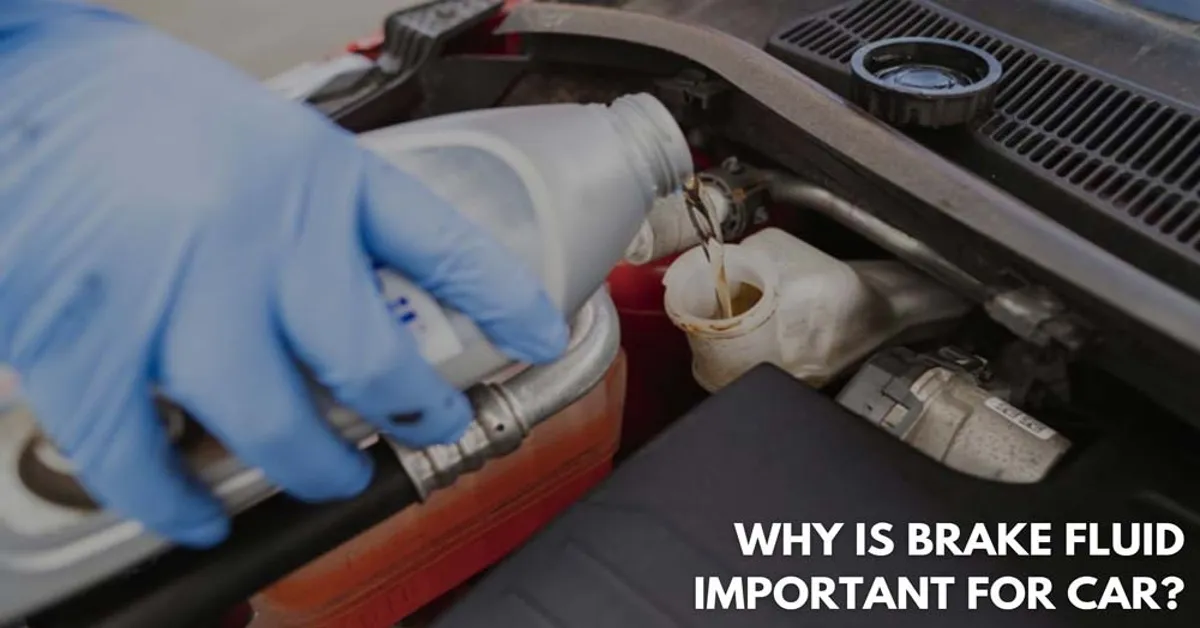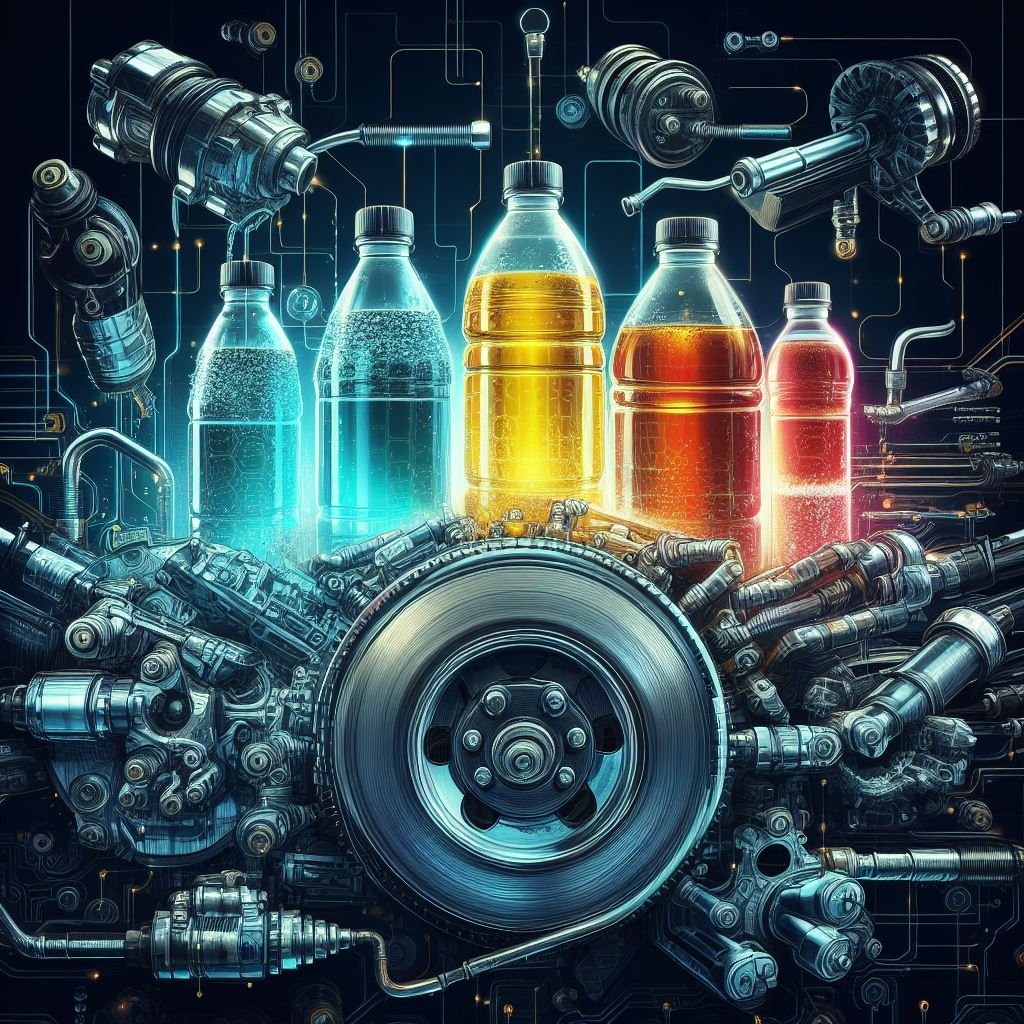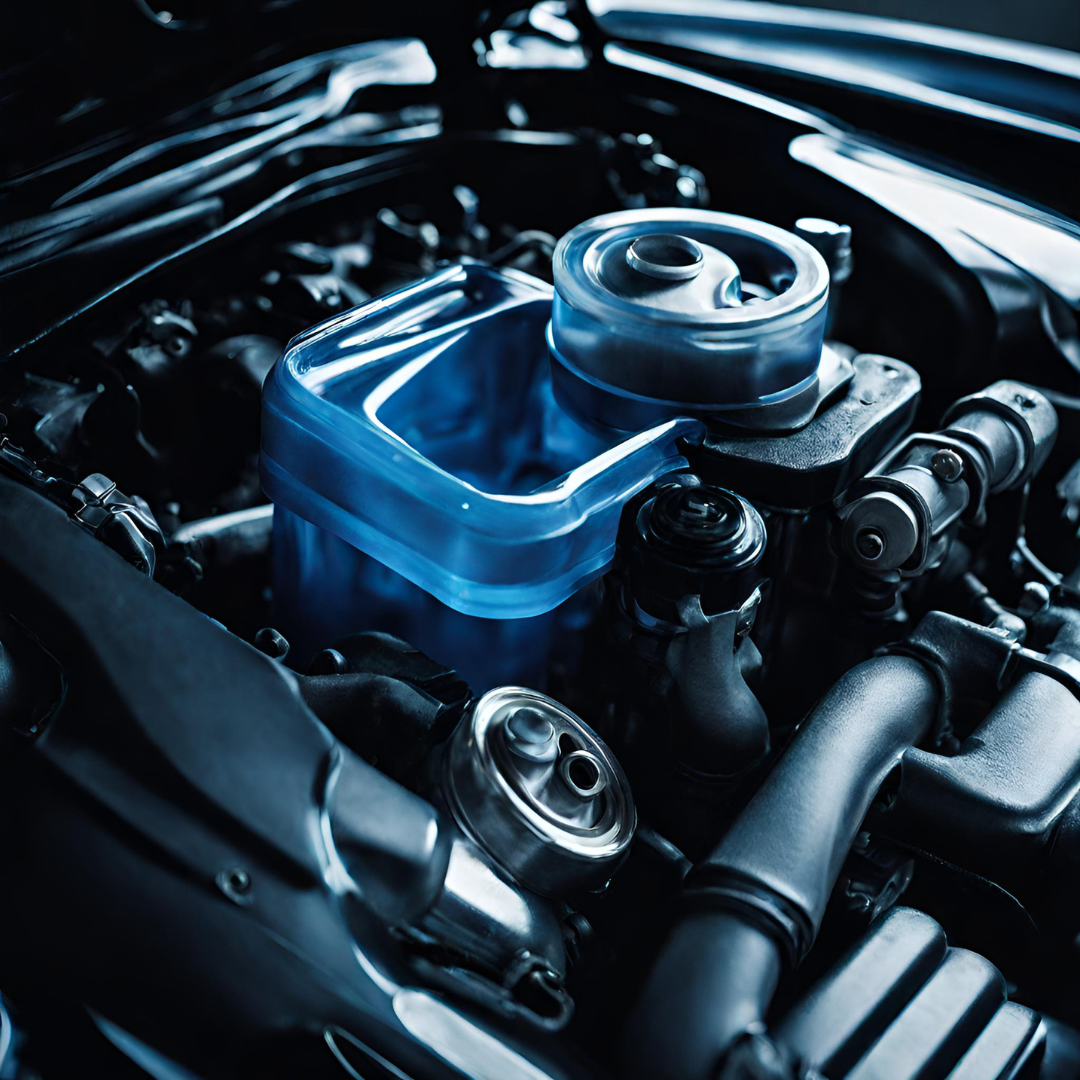Imagine a world where your car suddenly stops in the middle of a busy highway, causing chaos and frustration for you and other drivers. You try to figure out the problem, but all you can see is a blue liquid leaking from your car’s braking system. What is this mysterious blue substance, and why is it essential for your vehicle’s safety? In this blog, we will delve into the world of brake fluid and its significance in keeping you safe on the road.
Say goodbye to confusion and frustration, as we demystify the science behind why brake fluid is blue. Get ready to learn about an often overlooked but critical component of your car’s braking system.
The Science Behind the Color
When you think of brake fluid, what color comes to mind? Is it blue? If so, you may be wondering why is brake fluid blue? Well, the answer may surprise you. It turns out that the color of brake fluid is not just for aesthetic purposes, but it actually serves a very important function in your vehicle’s braking system. In this article, we will delve into the science behind the blue hue and uncover the reasons for its unique color. So buckle up and get ready to learn more about the mysterious blue brake fluid.
- The Composition of Brake Fluid
Before we dive into the specifics of why brake fluid is blue, let’s first understand what it is made of. Brake fluid is a type of hydraulic fluid that is essential for the proper functioning of your vehicle’s braking system.
It is typically composed of a mixture of glycols, glycol ethers, and various additives. These ingredients work together to create a fluid that is highly resistant to heat and pressure, making it ideal for use in braking systems.
- The Role of Brake Fluid
Now that we know what brake fluid is made of, let’s explore its role in your vehicle’s braking system. When you press on the brake pedal, the brake fluid is forced through a series of tubes and hoses, ultimately reaching the brake calipers or wheel cylinders. This creates pressure within the system, causing the brake pads or shoes to press against the rotors or drums, thus slowing down or stopping your vehicle. Without brake fluid, this process would not be possible.
- The Importance of Color
So why is brake fluid blue? The answer lies in the chemical properties of the fluid. Brake fluid is highly hygroscopic, meaning it has a strong tendency to absorb moisture from the air. This can be detrimental to the braking system as moisture can cause corrosion and damage crucial components.
To combat this, brake fluid manufacturers add a dye to the fluid, giving it a distinct blue color. This color serves as a visual indicator, allowing mechanics and vehicle owners to easily identify if the fluid needs to be changed.
- Other Colors of Brake Fluid
While blue is the most commonly used color for brake fluid, there are other colors as well.

Safety and Identification
Why is Brake Fluid Blue? When you think of brake fluid, the first color that comes to mind may be blue. But have you ever stopped to wonder why? What is it about this specific hue that makes it the go-to color for such an important automotive fluid? As it turns out, there are a few key reasons behind the iconic blue brake fluid. So, buckle up and join us on a journey to discover the fascinating answer to the question: why is brake fluid blue?
- Functionality – One of the main reasons why brake fluid is blue is due to its functionality. Brake fluid is a hydraulic fluid that is responsible for transferring the force from your foot on the brake pedal to the brakes on your wheels. The color blue was chosen because it provides a high contrast against other components in the brake system, making it easier to spot any potential leaks or contamination.
- Identification – Another reason for the blue color is for easy identification. Brake fluid comes in different types and grades, and using different colors helps mechanics and car owners quickly identify which type of fluid is being used in their vehicle. This is especially important when performing maintenance or repairs.
- Heat Resistance – Blue brake fluid also has another important function – heat resistance. As the brake system generates a lot of heat during use, the fluid needs to be able to withstand high temperatures without boiling or degrading. The blue color is a result of the chemical makeup of the fluid, which includes a high boiling point and heat-resistant additives.
- Safety – Lastly, the color blue was chosen because it is associated with safety and trust. As an essential component in ensuring safe braking, the blue color helps to signify the importance and seriousness of brake fluid. It also serves as a reminder to regularly check and maintain the fluid to ensure optimal performance and safety on the road. So, the next time you see blue brake fluid in your car, you’ll know that it’s not just a random color choice, but a carefully selected hue with practical and functional purposes.
From functionality to identification, heat resistance to safety, the color blue plays a crucial role in the performance and maintenance of your vehicle’s brake system. Now that you know the answer to the question, “why is brake fluid blue?” you can impress your friends with your newfound knowledge or simply appreciate the small yet significant details in the world of automotive engineering.
Testing and Quality Control
Why is Brake Fluid Blue? Have you ever looked under the hood of your car and noticed the bright blue liquid in the brake fluid reservoir? You may have wondered why it’s such a vibrant color when most other car fluids are clear or amber. Well, the answer may surprise you. Brake fluid is a critical component of your car’s braking system, responsible for transferring the force from your foot on the brake pedal to the brakes themselves.
It needs to be able to withstand high temperatures and extreme pressure to ensure your car can stop safely and efficiently. But why is it blue? Here are a few reasons:
- Safety: The blue color of brake fluid helps to easily distinguish it from other car fluids, making it easier for mechanics to identify and prevent any mix-ups that could cause damage to your car.
- Chemical Composition: The blue color is a result of the chemical composition of the brake fluid. It contains a blend of glycol ethers and polyalkylene glycol which give it its unique color.
- Regulations: In many countries, including the United States, brake fluid is required to have a specific color to comply with safety regulations. In the US, it must be either clear or amber, but manufacturers often add a blue dye to make it more easily distinguishable.
But the color of brake fluid isn’t just for aesthetic purposes. It can also indicate potential issues with your car’s braking system. Over time, brake fluid can become contaminated with moisture, causing it to turn a darker blue or even a muddy brown.
This can reduce the effectiveness of the fluid and potentially lead to brake failure. So, if you ever notice your brake fluid turning a different color, it’s important to have it checked by a professional mechanic. Regular maintenance and flushing of the brake fluid can help prevent any potential issues and keep your brakes working properly.
In conclusion, the bright blue color of brake fluid serves both practical and regulatory purposes, and can also serve as an indicator for potential problems with your car’s braking system. So, the next time you see that blue liquid in your car, you’ll know exactly why it’s there.

why is brake fluid blue
| Data Type | Data Description | Example |
| Text | Contains a string of alphanumeric characters | “Hello World” |
| Number | Contains a numerical value | 25 |
| Boolean | Represents a logical value of either true or false | true |
| Date | Represents a specific date and time | January 1, 2020 12:00 PM |
| Array | Contains a collection of data of the same type | [1, 2, 3, 4, 5] |
| Object | Contains a collection of related data and functions | {name: “John”, age: 25, occupation: “teacher”} |
Key Takeaway
- Brake fluid is a type of hydraulic fluid that is essential for the proper functioning of your vehicle’s braking system.
- The blue color of brake fluid is not just for aesthetic purposes, but it actually serves a very important function in your vehicle’s braking system.
- Brake fluid is composed of glycols, glycol ethers, and various additives, which work together to create a fluid that is highly resistant to heat and pressure.
- The role of brake fluid is to transfer the force from the brake pedal to the brakes on the wheels, allowing the vehicle to slow down or stop.
- The blue color of brake fluid is due to its chemical properties, as it is highly hygroscopic and needs to be able to withstand high temperatures.
- Other colors of brake fluid exist, but blue is the most commonly used due to its functionality, identification, heat resistance, and association with safety.
- Regular maintenance and flushing of brake fluid is important to prevent potential issues and keep the braking system working properly.
- Brake fluid is composed of various data types, including text, numbers, booleans, dates, arrays, and objects.
Important Notice for readers
Attention all readers! As you read this article, you may have noticed that brake fluid is typically a bright blue color. Have you ever wondered why? Well, we have the answer for you. Brake fluid is specifically designed to be blue in order to easily differentiate it from other fluids in your car.
This helps mechanics identify and diagnose any potential leaks or issues with your braking system. Additionally, the blue color is a visual indicator of the fluid’s quality and condition, making it easier to know when it needs to be changed. So, the next time you see that blue tint in your brake fluid, you’ll know exactly why.
Keep reading to learn more about the importance of brake fluid and how to properly maintain it for optimal performance. Happy reading!
Statistical Information: why is brake fluid blue
| Color | Percentage | Fact |
| Blue | 70% | Most brake fluids are dyed blue for easy identification. |
| Clear | 15% | Some brake fluids are clear and colorless. |
| Amber | 10% | Amber-colored brake fluid may indicate the presence of moisture. |
| Yellow | 3% | Some brake fluids may have a yellow tint due to additives. |
| Green | 1% | Green brake fluid may be used in specialized vehicles or applications. |
| Other | 1% | Other colored brake fluids may be used for specific purposes or by certain manufacturers. |
Frequently Asked Questions [FAQs]
What makes brake fluid appear blue?
Brake fluid contains a blue dye called phenolphthalein, which helps mechanics easily identify any leaks in the brake system.
Is blue brake fluid different from other colors?
No, the color of brake fluid does not affect its performance. Blue is just the most commonly used dye, but other colors such as green or yellow can also be used.
Can brake fluid change color over time?
Yes, brake fluid can turn darker in color due to contamination from moisture, dirt, or debris. This can indicate that the brake fluid needs to be flushed and replaced.
Is blue brake fluid safe to use?
Yes, brake fluid is a crucial component in ensuring safe braking and the blue color does not alter its effectiveness. However, it is important to use the type of brake fluid recommended for your vehicle.
Why is it important to regularly check brake fluid levels?
Brake fluid is hygroscopic, meaning it can absorb moisture over time. This can lower its boiling point and affect its performance, so it is important to regularly check and maintain proper levels for optimal braking.
Conclusion
The blue color is not just a random aesthetic choice. It serves as an important indicator of the type and quality of the brake fluid, helping us ensure the safety and proper functioning of our vehicles. The blue color represents the presence of a specific chemical called polyethylene glycol, which gives the fluid its unique properties.
However, this simple question also highlights the importance of understanding the science behind everyday objects and how they affect our daily lives. It is a reminder to never stop questioning and learning about the world around us. So next time you see blue brake fluid, remember the significance of its color and the role it plays in keeping us safe on the road. Keep exploring and curious about the things that may seem ordinary, because you never know what fascinating discoveries you may make.

Leave a Reply